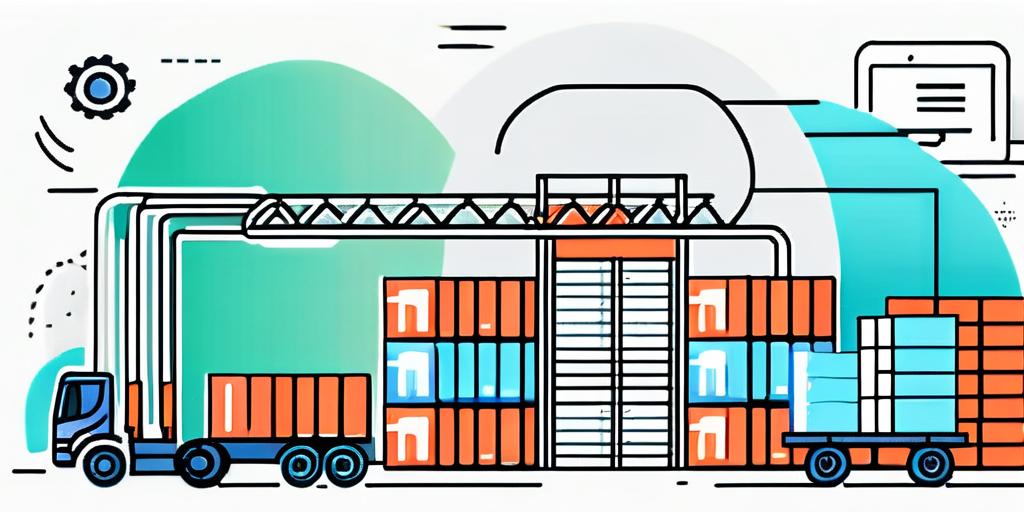Dropshipping has gained significant popularity in the e-commerce world due to its unique business model. In this comprehensive guide, we will delve into the basics of dropshipping, including the concept, mechanics, advantages, challenges, and how to start a dropshipping business. Whether you are a budding entrepreneur or an experienced online seller, understanding dropshipping is crucial for success in the competitive world of e-commerce.
Understanding the Concept of Dropshipping
Defining Dropshipping
Dropshipping is a business model where the store owner does not hold physical inventory. Instead, when a customer places an order, the store owner purchases the product from a third-party supplier, who then ships it directly to the customer. This eliminates the need for the store owner to handle the products physically.
The Role of Dropshipping in E-commerce
Dropshipping plays a pivotal role in the e-commerce industry, revolutionizing the way people start and manage their online businesses. With dropshipping, entrepreneurs can set up a virtual store without the need for substantial upfront investment in inventory.
Moreover, dropshipping allows store owners to focus on marketing and customer acquisition, rather than dealing with the complexities of inventory management, packaging, and shipping.
One of the key advantages of dropshipping is the flexibility it offers to store owners. Since they don’t need to hold physical inventory, they have the freedom to offer a wide range of products to their customers. This means that entrepreneurs can experiment with different niches and product categories, constantly adapting to market trends and customer demands.
Furthermore, dropshipping enables store owners to leverage the expertise and resources of third-party suppliers. These suppliers often have extensive knowledge of their products, allowing store owners to provide accurate and detailed information to their customers. This not only enhances the customer experience but also builds trust and credibility for the online store.
The Mechanics of Dropshipping
The Dropshipping Process
The dropshipping process involves several steps that facilitate the smooth flow of products from supplier to customer:

-
The customer places an order on the dropshipping store’s website.
-
The store owner receives the order details, including payment.
-
The store owner forwards the order information to the supplier, along with the customer’s shipping address.
-
The supplier prepares the order and ships it directly to the customer, often with the store owner’s branding.
Once the order is placed, the dropshipping process kicks into high gear, ensuring a seamless experience for both the store owner and the customer. The store owner, being the mastermind behind the operation, meticulously manages the online store, ensuring that it is visually appealing, user-friendly, and optimized for conversions. They invest time and effort into marketing strategies, employing various techniques to attract potential customers and drive sales.
When a customer decides to make a purchase, they navigate through the dropshipping store’s website, exploring the product offerings and adding items to their virtual cart. With a few simple clicks, they proceed to the checkout page, where they input their shipping and payment information. The store owner, eagerly awaiting the order, promptly receives the details, including the customer’s chosen products and the payment confirmation.
Key Players in Dropshipping
In the dropshipping ecosystem, several key players are involved, each playing a crucial role in the success of the business:
-
The Store Owner: They are the driving force behind the dropshipping store, responsible for its creation, management, and growth. They dedicate their time and expertise to curating a collection of products that resonate with their target audience. Additionally, they handle customer inquiries, manage inventory, and ensure a smooth order fulfillment process.
-
The Supplier: Acting as the backbone of the dropshipping operation, the supplier holds the inventory and fulfills customer orders on behalf of the store owner. They maintain a close partnership with the store owner, ensuring that the products are readily available and ready to be shipped to the customers. With their expertise in logistics and order fulfillment, they play a vital role in delivering a seamless experience to the end consumer.
-
The Customer: At the heart of the dropshipping business, the customer is the ultimate driving force behind its success. They browse through the online store, captivated by the carefully curated product selection. With their trust and confidence in the store owner and the supplier, they proceed to make a purchase, eagerly awaiting the arrival of their chosen items. Their satisfaction and positive experience are paramount, as they become loyal advocates for the dropshipping store.
As the dropshipping industry continues to thrive, these key players collaborate harmoniously, creating a dynamic ecosystem that caters to the ever-evolving needs and desires of customers worldwide. The mechanics of dropshipping rely on their collective efforts, ensuring a seamless and efficient process from start to finish.
Advantages of Dropshipping
Dropshipping is a business model that has gained significant popularity in recent years, and for good reason. It offers a multitude of advantages that make it an attractive option for aspiring entrepreneurs. In this article, we will delve deeper into two key advantages of dropshipping: low startup costs and flexibility and scalability.

Low Startup Costs
One of the most significant advantages of dropshipping is its low startup cost. Traditional retail businesses require substantial upfront investments in inventory, storage space, and fulfillment infrastructure. This can be a major barrier for many entrepreneurs, especially those who are just starting out or have limited financial resources.
With dropshipping, entrepreneurs can start selling products online with minimal financial risk. Since the products are sourced directly from suppliers, there is no need to invest in inventory upfront. This eliminates the need for costly warehousing and storage facilities, as well as the associated expenses such as packaging materials and shipping supplies.
Moreover, dropshipping allows entrepreneurs to save on other operational costs such as hiring additional staff to handle inventory management and order fulfillment. This not only reduces expenses but also frees up valuable time and resources that can be allocated to other aspects of the business, such as marketing and customer service.
Flexibility and Scalability
Dropshipping offers unparalleled flexibility and scalability, making it an ideal choice for entrepreneurs who want to adapt quickly to market trends and scale their businesses.
As there is no physical inventory to manage, store owners can easily add or remove products from their online stores based on customer demand and market trends. This flexibility allows entrepreneurs to test different products and niches without the risk of being stuck with unsold inventory.
Additionally, the dropshipping model allows for seamless scalability. As the business grows, entrepreneurs can easily expand their product offerings and reach a wider customer base without the need for additional infrastructure or resources. The supplier takes care of order fulfillment, ensuring that the business can handle increased sales volume without any logistical challenges.
In conclusion, dropshipping offers a range of advantages that make it an attractive option for entrepreneurs. Its low startup costs and flexibility and scalability make it a viable business model for those looking to enter the world of e-commerce. By eliminating the need for upfront inventory investment and providing the ability to adapt quickly to market trends, dropshipping empowers entrepreneurs to build successful online businesses with minimal financial risk.
Challenges in Dropshipping
Dropshipping has become a popular business model for many entrepreneurs due to its low startup costs and flexibility. However, like any business, dropshipping comes with its fair share of challenges. In this article, we will explore two common challenges that dropshippers often face: supplier issues and customer service challenges.

Supplier Issues
One of the main challenges in dropshipping is finding reliable suppliers. While there are many reputable suppliers available, it can be a daunting task to find the perfect match for your business. Some suppliers may lack consistency in product quality, shipping times, or communication.
Imagine this scenario: you have spent hours researching and selecting a supplier for your dropshipping store. You have carefully examined their product catalog, read customer reviews, and even reached out to them with a few questions. Everything seems to be in order, and you decide to move forward with them. However, once you start receiving orders, you notice that the quality of the products is not up to par. Some items arrive damaged, while others are completely different from what was advertised. This can be frustrating for both you and your customers.
To avoid such situations, thorough research and due diligence when selecting suppliers are crucial. Take the time to read reviews from other dropshippers who have worked with the supplier before. Look for suppliers who have a proven track record of delivering high-quality products and excellent customer service. Additionally, establish clear communication channels with your suppliers to address any concerns or issues that may arise.
Customer Service Challenges
Another challenge in dropshipping is maintaining excellent customer service. Since the store owner has limited control over the shipping process, it is essential to set realistic expectations for customers regarding shipping times and potential delays.
Picture this: a customer places an order on your dropshipping store and expects to receive their package within a few days. However, due to unforeseen circumstances, such as customs delays or logistical issues, the package takes longer than expected to arrive. The customer becomes frustrated and reaches out to you, seeking answers and demanding a resolution.
As a dropshipper, it is crucial to manage customer expectations and provide transparent communication. Clearly state the estimated shipping times on your website and inform customers about any potential delays that may occur. Consistent communication with customers throughout the shipping process can help alleviate their concerns and build trust.
In addition to setting realistic expectations, addressing any customer concerns promptly is vital. Respond to customer inquiries in a timely manner and provide updates on their order status. By being proactive and transparent, you can mitigate customer service challenges and maintain a positive relationship with your customers.
In conclusion, dropshipping comes with its fair share of challenges, but with careful supplier selection and excellent customer service, these challenges can be overcome. By conducting thorough research, establishing clear communication channels with suppliers, and managing customer expectations, you can build a successful dropshipping business.
How to Start a Dropshipping Business
Choosing a Niche
The first step in starting a dropshipping business is selecting a niche. A niche allows you to focus your efforts and cater to a specific target audience. Conduct thorough market research to identify profitable niches with adequate demand and manageable competition.
Finding a Reliable Supplier
After choosing a niche, finding a reliable supplier is crucial for a successful dropshipping business. Look for suppliers with a proven track record, good customer reviews, and a wide range of products. Building a strong supplier relationship is key to ensuring product quality, timely fulfillment, and reliable communication.
Building Your E-commerce Website
Finally, the e-commerce website serves as the virtual storefront for your dropshipping business. Invest in a user-friendly and visually appealing website design, with intuitive navigation and clear product descriptions. Ensure the website integrates with your chosen e-commerce platform and has secure payment gateways to provide a smooth and secure shopping experience for your customers.
Now that you have a comprehensive understanding of dropshipping, its mechanics, advantages, challenges, and how to start a dropshipping business, you can embark on your entrepreneurial journey with confidence. Dropshipping offers tremendous opportunities for aspiring e-commerce entrepreneurs, allowing them to focus on growing their business while leaving the complexities of inventory management and order fulfillment in capable hands.

